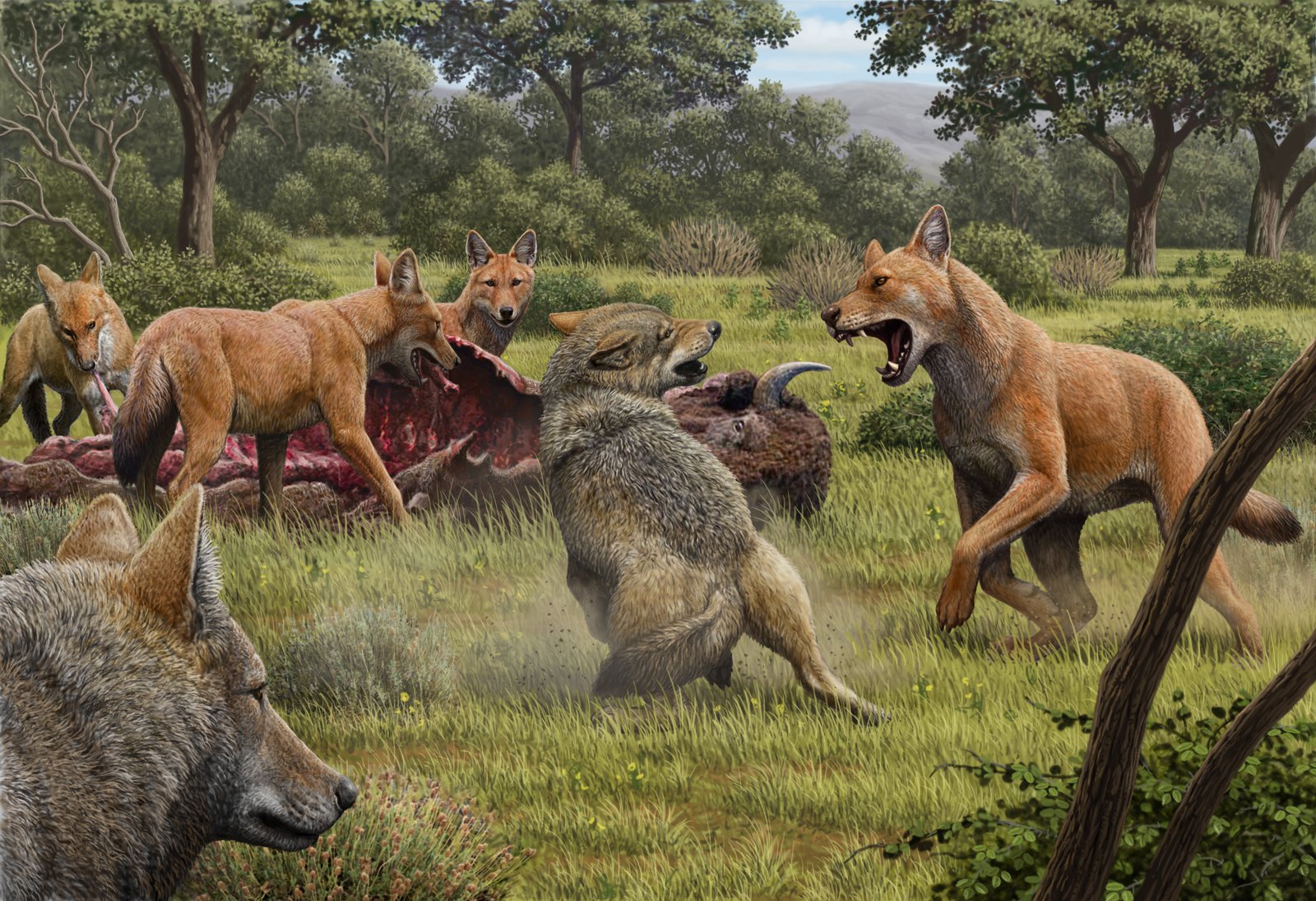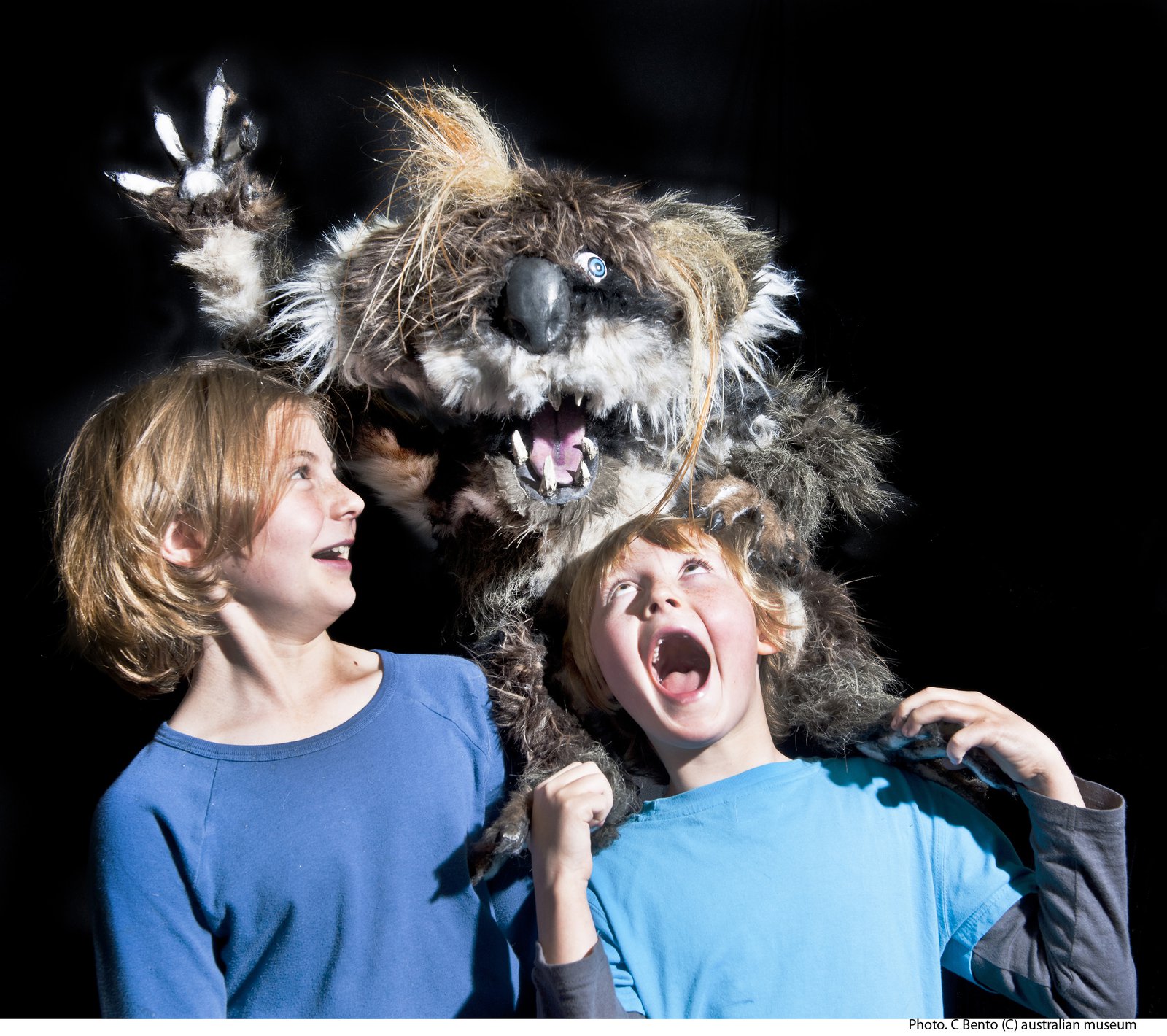Myth or museum specimen? The animals that are more fact than fiction
Famously featured in George R.R. Martin's Game of Thrones franchise, the dire wolf is far more than a popular legend. A recent study in Nature has discovered how genetically distinct this prehistoric carnivore actually was. Read more about the study, and other animals thought to be pure myth.
Many have heard about the dire wolves from George R.R. Martin's Game of Thrones franchise – the towering predators and companions of the North. However, what may be less well known is that these huge wolves are far from fiction. Dire wolves were once commonly found in North America up until 13,000 years ago and a recent study has highlighted, with thanks to fossil remains, how complex these legendary creatures once were.
The new study in Nature, led by an international team from the UK, Germany, Australia and the US, including co-author Chief Scientist and Director of AMRI Professor Kristofer Helgen, reveals that dire wolves were not similar to other canine species, as previously thought, and evolved solely in North America for millions of years. Ancient DNA of five dire wolf sub-fossils from Wyoming, Idaho, Ohio and Tennessee, dating to over 50,000 years ago were analysed in concert with the genome of many other wolf-like canid species. The study found that the dire wolf evolved solely in North America, unlike other canid species who migrated between North America and Eurasia over time. Importantly, we now know that the dire wolf was extremely genetically unique; although the dire wolf overlapped with coyotes and grey wolves for at least 10,000 years, and likely diverged from grey wolves more than five million years ago, there is no evidence that dire wolves interbred with these canid species. These evolutionary differences may explain why the dire wolf did not adapt at the end of the ice age, leading to its extinction. Therefore, this famous prehistoric carnivore from the Pleistocene America was real – and was potentially the last surviving member of an ancient lineage, distant from all living canines.

Somewhere in Southwestern North America during the late Pleistocene, a pack of dire wolves (Canis dirus) are feeding on their bison kill, while a pair of grey wolves (Canis lupus) approach in the hopes of scavenging. One of the dire wolves rushes in to confront the grey wolves, and their confrontation allows a comparison of the bigger, larger-headed and reddish-brown dire wolf with its smaller, grey relative.
Image: Mauricio Antón/Nature© Mauricio Antón/Nature
The kraken
So, what other legendary creatures are more fact than fiction?
For centuries, the ocean has been a source of mystery – home to mythical creatures and sea monsters that plagued the lives of sailors. Nautical lore is littered with recurring icons and legends.
Many have heard of the legend of the kraken – an epic sea monster based in Nordic folklore, a terrifying, marauding denizen of the deep that has been regularly figured in films and books and now even on rum bottles! Thought to haunt the seas between Iceland and Greenland, legend has it that the kraken attacked ships with its tentacles, created whirlpools to suck vessels under the sea and devoured the crew. The monster was first mentioned in 1180 by King Sverre of Norway and has led to many ‘accounts’ since – most notably during Europe’s first modern scientific survey in the 18th century and by Carl Linnaeus in his Systema Naturae (1735).
But is the kraken real? Sometimes referred to as a monster of the deep, and still shrouded in mystery, the legend of the kraken is inspired by the giant squid (Architeuthis dux) – one of the largest of all living cephalopods, and the largest invertebrate in the world. Two thirds of the length of these squids is made up by a pair of long feeding tentacles, each bearing an elongate club on the tip. These metre-long tips bear large suckers armed with toothed horny rings. They are found worldwide, in deep, dark and cold waters and although they have fins, these fins are feeble, so the animal is unlikely to be a fast swimmer or underwater acrobat. Little is known of its exact distribution, biology and behaviour due to the limited number of specimens that have been observed, although it is reported to weigh up to at least 500 kg.
The unicorn
You may not have heard of a Narwhal (Monodon monoceros), but you have probably heard of a unicorn. This mythical one-horned creature, typically depicted with the body of a goat or horse, has been featured in a range of historical, mythological and religious works. The unicorn has appeared in Mesopotamian artworks, in ancient Indian and Chinese myths, Greek literature, the Bible and quite famously in a 15th century Flemish tapestry, The Lady and the Unicorn – just to name a few.
Two species that have inspired myths of the unicorn’s existence are the aquatic arctic Narwhals and Walruses (Odobenus rosmarus). These two species were historically important in European markets as sources of ivory and medicine and became irrevocably associated with unicorns. ‘Unicorn horns’ were made into cups and sceptres and were traded for centuries throughout Europe, by Vikings during the Middle Ages and during the Renaissance. Other one-horned animals such as the Indian Rhinoceros (Rhinoceros unicornis), the rhinoceros beetle (Dynastinae) and the Privet hawk moth (Psilogramma menephron) have also been cited as real-world inspiration for the unicorn (in the De Unicornu Observationes Novae (New observations on the unicorn) by the Bartholin family).
Yet it is the Narwhal that is referred to as ‘the unicorn of the sea’. Males have a long, spiral singular tusk (which is actually an asymmetrical modified canine tooth) that grows through the Narwhal’s upper lip. As a toothed whale, narwhals are related to belugas, dolphins, porpoises and orcas. These pale-coloured porpoises are found in Arctic coastal waters and rivers and while they often swim in groups of 15-20, gatherings of hundreds, even thousands, have been reported.
The mermaid
The mermaid myth, a half-human and half-fish creature, has manifested in many different ways, with names with many origins, appearances, and behaviours. One of the earliest mermaid figures in iconography is found in ancient Mesopotamia, in the form of the deity Atargatis (mother-goddess associated with fertility, femininity and water; depicted as half-woman and half-fish). The mermaid legend spread across the Classical world – for example, Pliny the Elder in his Natural History referred to ‘nereids’ who were half-human and half-fish mermaids, and 'sirens' have been featured in Greek mythology, creatures who lured sailors to their deaths (in Homer’s Odyssey). These contradictory figures – beautiful, charming, and terrifying – featured in nautical lore throughout the Middle Ages. Christopher Columbus even reported mermaid sightings when he set sail in 1492. So popular was the myth, that hoaxers tried to cash in on it. For example, P.T. Barnum displayed the popular attraction, the ‘Feejee Mermaid’ in the 1840s.
The inspiration for mermaids is thought to be Dugongs (Dugong dugon) and Manatees (Trichechus sp), or even whales. As most accounts of mermaids are based on distant and partial sightings, it is most likely that these witnesses saw dugongs and manatees at 2-3 m in length. The flattened tail of a dugong is similar to a ‘mermaid tail’ and the two flippers somewhat resemble human arms. Dugongs and Manatees also have mammary glands behind their forelimbs, near their ‘armpits’, to an extent resembling the human chest. Dugongs prefer shallow bays and areas protected by large inshore islands. Dugongs and manatees are closely related (order Sirenia) and have been dubbed ‘sea-cows’ due to their slow nature and grazing nature.
Many wonderful animals exist in our natural world that have inspired myths and legends throughout history and across the world.
And as for our own backyard? The infamous drop bear is certainly worth watching out for!

© Australian Museum
Meagan Warwick, AMRI & External Partnerships Coordinator, Australian Museum Research Institute.
Professor Kristofer Helgen, Chief Scientist and Director, Australian Museum Research Institute.
Acknowledgements:
We would like to sincerely thank Cameron Slatyer (Branch Manager, Life and Geosciences), Dr Mandy Reid (Collection Manager, Malacology), Dr Mark Eldridge (Principal Research Scientist, Terrestrial Vertebrates) and Dr Sandy Ingleby (Collection Manager, Mammals) for their assistance, editorial support and suggestions.
More information:
- Perri, A.R., Mitchell, K.J., Mouton, A. et al. Dire wolves were the last of an ancient New World canid lineage. Nature (2021). https://doi.org/10.1038/s41586-020-03082-x
- Ancient DNA reveals secrets of Game of Thrones wolves. The Australian Museum, Press release. https://australian.museum/about/organisation/media-centre/dire-wolves-/
- Australian DNA detectives reveal secrets of Game of Thrones wolves. Sydney Morning Herald. https://www.smh.com.au/national/australian-dna-detectives-reveal-secrets-of-game-of-thrones-wolves-20210113-p56ttg.html
- Southern Giant Squid. The Australian Museum. https://australian.museum/learn/animals/molluscs/southern-giant-squid-architeuthis-dux/
- The real-life origins of the legendary Kraken. The Conversation. 2015. https://theconversation.com/the-real-life-origins-of-the-legendary-kraken-52058
- On unicorns...The Australian Museum. https://australian.museum/blog-archive/museullaneous/unicorns/
- Unicorn, mythological creature. Britannica. https://www.britannica.com/topic/unicorn
- The Mystery of the Sea Unicorn. National Geographic. https://www.nationalgeographic.com/science/phenomena/2014/03/18/the-mystery-of-the-sea-unicorn/
- Fantastically Wrong: The Murderous, Sometimes Sexy History of the Mermaid. WIRED. https://www.wired.com/2014/10/fantastically-wrong-strange-murderous-sometimes-sexy-history-mermaid/
- Dugong. The Australian Museum. https://australian.museum/learn/animals/mammals/dugong/
- It’s a Mermaid, it’s a Sea Cow, it’s a…Dugong? Ocean Conservancy. https://oceanconservancy.org/blog/2018/05/23/mermaid-sea-cow-dugong/
- Mermaids & Mermen: Facts & Legends. Live Science. https://www.livescience.com/39882-mermaid.html
- From Mermaids to Manatees: the Myth and the Reality. Smithsonian. https://ocean.si.edu/ocean-life/marine-mammals/mermaids-manatees-myth-and-reality







